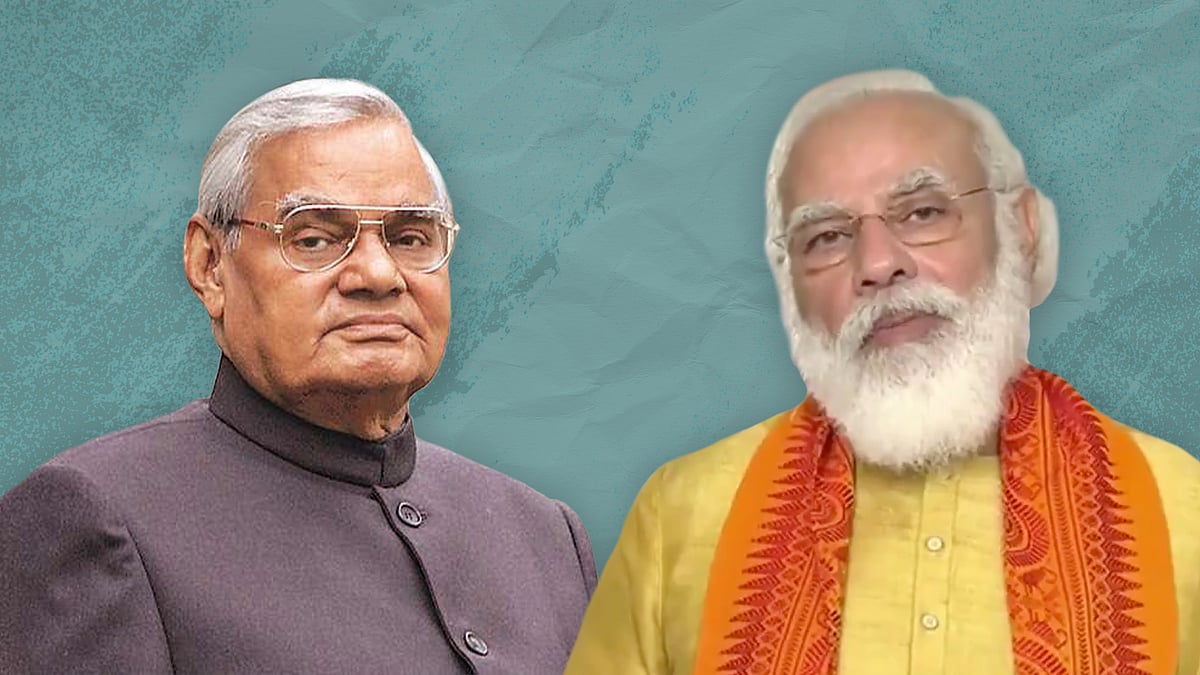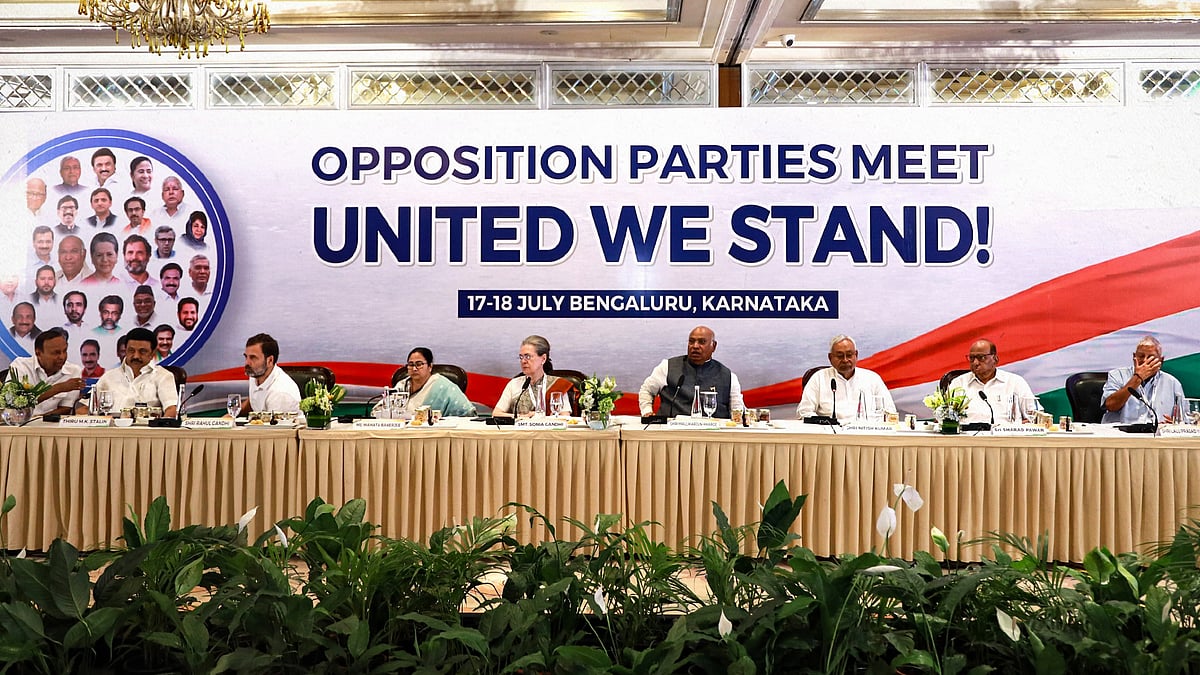INDIA vs Modi: Four challenges that await the Opposition’s new alliance
It might need to take a leaf out of the coalition era’s alliance playbook to make things work.
The opposition’s Patna declaration of last month is now more than merely exploratory. Swapping Shimla for Bengaluru as the venue for its second big event, the two-day meeting of 26 parties in Karnataka ended with the announcement of a national alliance. It named itself INDIA, following the acronym-fixated style of the Prime Minister Narendra Modi-led coalition currently in power.
INDIA stands for Indian National Development Inclusive Alliance. Its verbosity doesn’t come in the way of its catchy symbolism. But this is, as the Congress and other attending parties know, only the first step towards the hard grind of firming up an effective coalition for the 2024 Lok Sabha poll.
Patna had 16 parties in attendance, which swelled to 26 in Bengaluru. The Aam Aadmi Party is a notable addition after the Congress expressed its willingness to oppose the centre’s ordinance on control over administrative services in Delhi. At a time when the coalition era’s national alliance playbook is largely underused, if not unused, the new alliance may need to revisit it to steer the process.
To begin with, the wide range of allies, with the Congress as a pivot, will need an institutional frame to direct their joint campaign and iron out a number of issues and differences that could crop up. The alliance seems alert to the need for a mechanism to deal with these aspects. According to The Hindu, the idea of setting up a common secretariat is being considered. This will have representatives from the allying parties and will function as the nerve centre for the campaign against the BJP-led government at the centre. The alliance is also likely to set up subcommittees for communication and joint strategies, campaign and election events like rallies, and agitationist politics against the central government.
A key element of the coalition arrangements of the past decades was the instrument of the common minimum programme. Even if the pragmatism of alliances meant that such common codes meant little, they offered an ideological veneer to the expedient moves of power politics. In the nineties, they had different variants in pre-poll pacts as well as post-poll arrangements of coalition governments.
While there were murmurs that the new alliance might leave this to post-poll considerations, it’s now clear that INDIA will declare a pre-poll programme. As a strategy, this is expected to offset the rival NDA’s charge that the alliance lacks ideological cohesion. lt’s also likely to streamline the alliance’s campaign style.
As the new alliance moves to Mumbai for its next meeting of top leaders, it must not lose sight of present and foreseeable challenges, and the opportunities that it has to grab.
First, in the latest meeting at Bengaluru, the Congress ruled out any claim to the prime ministerial face, or even the need for a leader of the alliance. This is in line with how the question of leadership was brushed aside as inconsequential at the Patna meet.
The fledgling coalition is trying to meet two objectives by not talking about the leadership issue. The primary one is obviously rooted in not repelling any potential ally by claiming the larger share in power equations if the alliance manages to win the poll. The other factor could be tactical, and comes across as defensive, even though it has its use in electoral combat. The alliance is duly wary of the BJP-led campaign juxtaposing Modi’s appeal against any leader that the opposition combine might project. The coalition may reckon that such a match-up will play into the hands of the BJP campaign.
Notwithstanding these factors, such indecision on leadership is prone to being attacked as early signs of instability, lack of cohesion and the signs of a future power struggle in the new opposition alliance. Even in the emerging modes of campaign , and more so in personality-driven digital outreach, the certitude of a face to pitch can be leveraged against the speculations of a power wrestling among the allies.
Second, there is the challenge of how allies are positioned in transferring their votes to other parties in the alliance. In some states like West Bengal, Punjab and Kerala to name a few, this will take more than merely a formal alliance to get votes transferred to a common candidate. Such problems are less serious in states like Tamil Nadu where a party like the DMK has no serious competition from the Congress or the Left parties. But in many of the 11 states that the alliance partners govern, vote transferability will take far more effort to sway core voters.
Third, the coordination among workers of allying parties is significant. This is more important for parties with strong cadre who have been campaigning against parties which they now find as allies. Convincing the cadre to work with the same zeal for the allies, or at least refrain from opposing them, will be a daunting task. In the last Lok Sabha poll in 2019, such problems were obvious in Uttar Pradesh when workers of the Samajwadi Party and Bahujan Samaj Party found it difficult to translate the alliance of their two parties into a coordinated campaign on the ground.
Fourth, the glue of a vaguely defined anti-BJPism, like the anti-Congressism of the sixties and the seventies, may need other supplements if the alliance partners want to run a campaign that pitches a strong national alternative. The political tone and tenor of the campaign would be watched not only for what it’s assailing but also where it stands for what.
In pitching a national opposition alliance of 26 parties, the Bengaluru meet has revived the playbook that, in the past decades, saw the clash of rival alliances in national politics. In a way, it has signs of an alliance-bipolarity of the seventies, nineties and the first century of this decade. That, however, doesn’t mean that the backdrop hasn’t changed. It has changed significantly, and in this altered political landscape, alliance wars will have to redefine the arena of contest.
 Comparing Modi and Vajpayee eras of coalition politics is misplaced. Here’s why
Comparing Modi and Vajpayee eras of coalition politics is misplaced. Here’s why